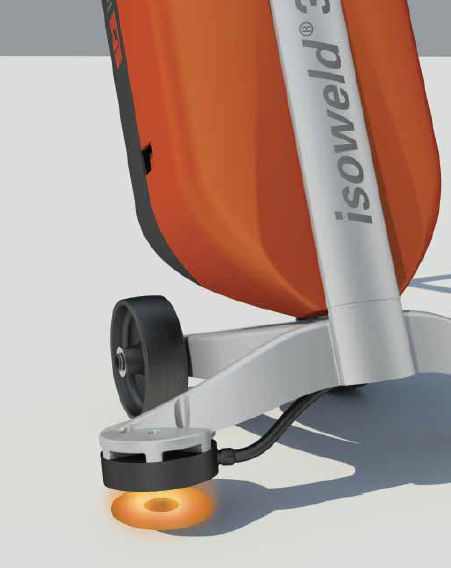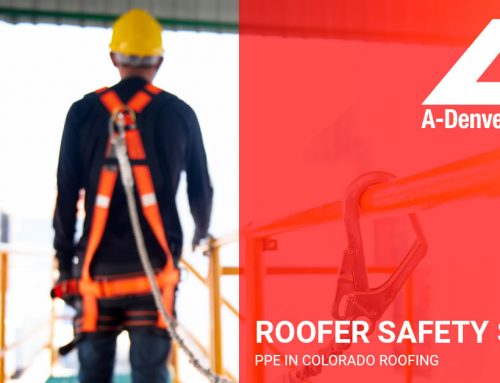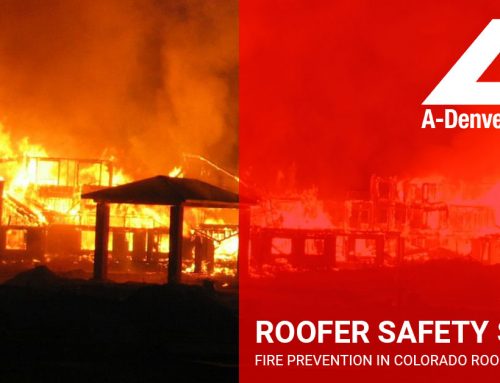isoweld Commercial Roofing Field Fastening System
Are you interested in learning about new high -performing commercial roofing system technologies? Are you looking for a commercial roofing contractor to re-roof your commercial building in Denver, Colorado Springs or Denver Metro area? Well read on and look no further than A-Denver Roofing to provide the most affordable re-roofing services for your building.
The isoweld system is an alternative attachment method for commercial roofing systems utilizing TPO and PVC single-ply membranes. This non-penetrating system uses the same fastener and plate to secure the membrane and insulation to the deck, creating an FM-approved system with no point of entry for moisture. This isoweld system also provides superior wind uplift performance compared to traditional mechanically fastened TPO or PVC assemblies. This system is perfect for commercial buildings in Denver, Colorado Springs, and the entire state of Colorado because of its strong wind uplift performance. Commercial building owners in Colorado love this system because of its affordability compared to other high wind uplift systems.
IMPROVED COMMERCIAL ROOFING PRODUCTIVITY
By eliminating mechanical fastening in the seam, this isoweld system decreases the number of screws and plates required for some assemblies by as much as 50%. This reduction results in minimized labor and material costs. Spacing the isoweld plates in a grid-type pattern more evenly distributes the wind load and allows the use of full-width sheets across the entire roof area, eliminating the need for narrow perimeter sheets and reducing the number of seam welds. The isoweld system results in faster dry-in time and allows our highly-skilled commercial roofing crews to tackle more square feet each day without the added concern of disrupting activities inside your commercial building due to potential inclement weather. This is especially critical in Colorado where the weather can turn from fair to stormy in a matter of hours.
IMPROVED COMMERCIAL ROOFING PERFORMANCE
The evenly distributed securement provided by the isoweld system reduces wind flutter and noise as well as membrane fatigue compared to traditional mechanically attached commercial roofing assemblies. The plates are adhered to the underside of the single-ply TPO membrane, creating a non-penetrating assembly.
The isoweld tool features a plate locating system to ensure that the welding node is placed directly over the plate. This improves the accuracy of the welds, critical for high-performing commercial roofing assemblies in Colorado.
ISOWELD FEATURES AND BENEFITS
» Reduces fasteners, plates, and labor, meaning more value for your money
» No perimeter sheets required
» Faster dry-in time, providing little to no business disruption
» Non-penetrating system, eliminating the chances for leaks
» Symmetrical wind load distribution, keeping your roof, on your roof, in high Colorado wind events

FASTENERS AND PLATES
By eliminating mechanical fastening in the seam, this isoweld system decreases the number of screws and plates required for some assemblies by as much as 50%. This reduction results in minimized labor and material costs. Spacing the isoweld plates in a grid-type pattern more evenly distributes the wind load and allows the use of full-width sheets across the entire roof area, eliminating the need for narrow perimeter sheets and reducing the number of seam welds. The isoweld system results in faster dry-in time and allows our highly-skilled commercial roofing crews to tackle more square feet each day without the added concern of disrupting activities inside your commercial building due to potential inclement weather. This is especially critical in Colorado where the weather can turn from fair to stormy in a matter of hours.
COMMERCIAL ROOFING INDUCTION WELDING TOOL
The commercial roofing isoweld 3000 induction tool is user-friendly, featuring a height-adjustable handle and membrane-compatible wheels for easy maneuverability. This keeps labor hours down, and productivity high, thereby reducing the total cost of the project for commercial building owners in Colorado. There is an inductor dummy for stabilization and a built-in temperature sensor that allows automatic adjustment of the welding parameters relative to the external site temperature. This feature keeps the welds at just the right temperature so as to not damage the membrane. The induction tool also provides built-in compensation for variation of power supply.
HOW IT WORKS
- The isoweld plates are positioned in a grid-type or in-line pattern on the substrate and secured with fasteners to the deck.
- TPO or PVC membrane is laid into position and the seams are hot-air welded. No fasteners are required in the seams.
- The isoweld induction welding tool is placed on the membrane surface directly above each of the plates. The tool then activates a special coating on the plate, resulting in a high-strength bond between the plate and the membrane.
- Weighted magnets are then placed over the plates to dissipate the heat and create a solid contact between the bottom surface of the membrane and the hot-melt adhesive on the plates.








